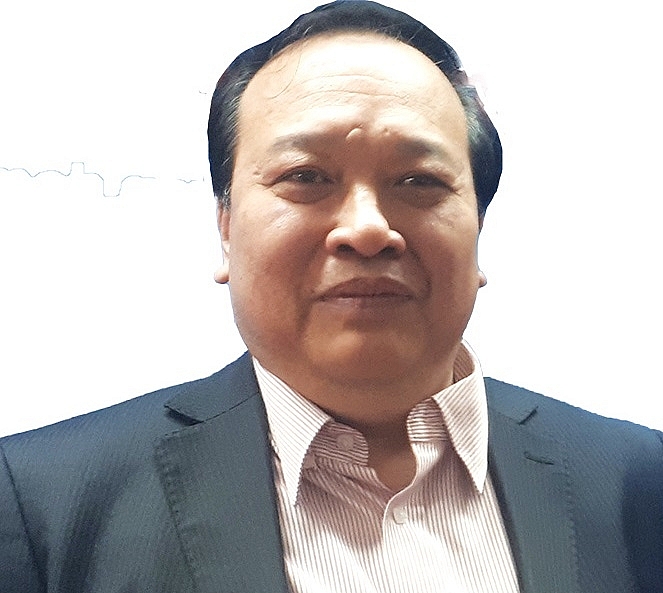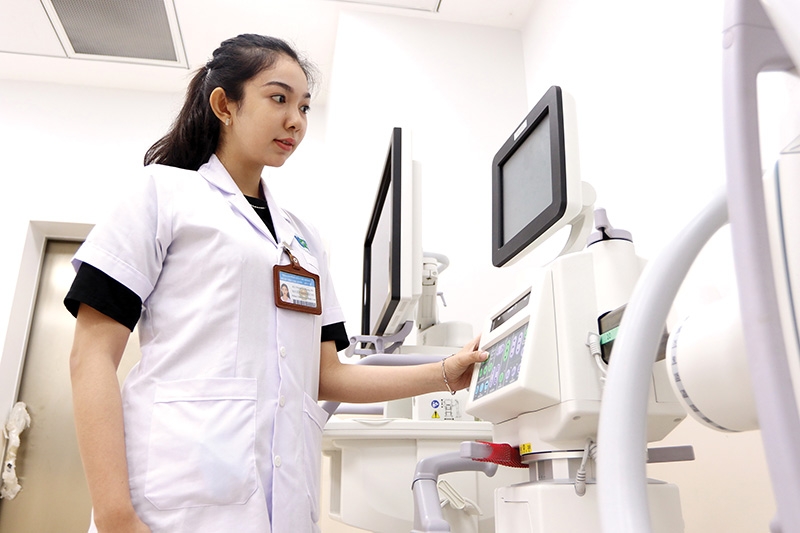Stability created with new health e-portal
 |
| Nguyen Minh Tuan, director of the Ministry of Health’s Department of Medical Equipment and Construction |
As medical devices are specialised equipment, they need specialised state management. As ruled in the Law on Public Procurement, prices of medical devices must be clear in tender results, specifically in a tender contract which includes their names, functions, configurations, and conditions for aftersales services and delivery.
Listed prices of available medical devices on the public information portal are expected to be sold in line with price regulations in the Law on Price. Through the portal, units and hospitals can study these prices and other information to make appropriate decisions.
We worked with multinational corporations on the policy on declaring information on medical devices on the portal and hope that their market will be more stable and offer real value to buyers, on par with regional competitors.
To deal with price differences between tender prices and those issued in the portal, we have launched another platform on the collection and declaration of tender results. Our department is requested to work with other units of the Ministry of Health (MoH) on combining and connecting these two portals to enable people to supervise their operations and make comparisons between the available products.
To prevent businesses profiting from large price differences, Circular No.14/2020/TT-BYT dated July 10, 2020 on medical device tenders in public health facilities includes the regulation on decentralisation and authorisation which allows to only authorise two to three legitimate distributors and suppliers in a tender package. With these, the information will be more transparent, gradually making the market more stable and deterring possible wrongdoings and violations.
Regarding learning lessons from regional countries about prices, we studied pricing frameworks for medical devices and will continue to do so in the future. However, this may take a long time and require a lot of resources.
 |
| New pricing functions can assist hospitals in making better decisions depending on their financial capacity |
Many pharmaceuticals have wholesale ceiling prices, while medical devices do not, thus making price differences of 50-60 per cent between the original cost, insurance, and freight (CIF) and the actual selling price to hospitals. However, we should not compare between pharmaceuticals and medical devices as the former are named among the products under price control of the government in line with the Law on Price.
Meanwhile, medical devices are not named in this list. Therefore, to offer information about medical devices more transparently, the MoH is building its public information portal to declare prices and other information on medical device management to facilitate any investigations and look-ups.
At present, 90-95 per cent of medical devices in Vietnam are imported. However, as currently regulated, CIF prices are not publicly declared to ensure the benefits of businesses. Nevertheless, the expenditures obviously do not reflect the end prices of products as imported products also include import duty, business cost, and other factors.
In case of violations, the MoH will work with the General Department of Vietnam Customs on analysing the CIF of any relevant product.
To create a transparent and efficient medical device market, it needs collaboration from four parties. First are the suppliers, who must quote prices and regularly update information while ensuring the quality of products as declared.
Next are buyers, that is the hospitals. They should have capable specialised teams to analyse and make the correct decisions, depending on their financial capacity and necessities.
Third are the people. People have the right to know information, supervise activities, and give comments to state-authorised agencies.
Finally, there are the state agencies, who manage the portal’s performance, while issuing appropriate sanctions to increase efficiency in this field.
In the past, we had Decree No.176/2013/ND-CP on administrative fines in the health sector, including medical devices. Now, the fines are intensified as ruled in Decree No.117/2020/ND-CP dated September 28 which replaces Decree 176.
The portal is an initial step to further improve regulations in line with supply and demand in the market.
What the stars mean:
★ Poor ★ ★ Promising ★★★ Good ★★★★ Very good ★★★★★ Exceptional
Related Contents
Latest News
More News
- Legal framework completed for national digital transformation (December 13, 2025 | 21:55)
- SOAR initiative launched at TECHFEST Vietnam 2025 (December 13, 2025 | 10:00)
- Promoting digital assets initiative in Vietnam (December 13, 2025 | 09:30)
- Legislation gives government flexibility for loan guarantees (December 11, 2025 | 18:04)
- Vietnam masters core technologies of automobile value chain (December 11, 2025 | 17:46)
- Japanese investors pursue M&A strategies with long-term vision in Vietnam (December 11, 2025 | 12:14)
- Raising product quality to secure Vietnam’s position in US market (December 11, 2025 | 12:00)
- Industrial sector posts robust gains as year-end demand rises (December 09, 2025 | 13:38)
- ASEAN economies move up the global chip value chain (December 09, 2025 | 13:32)
- Reforms urged to unleash private-sector power (December 07, 2025 | 09:00)

 Tag:
Tag:





















 Mobile Version
Mobile Version